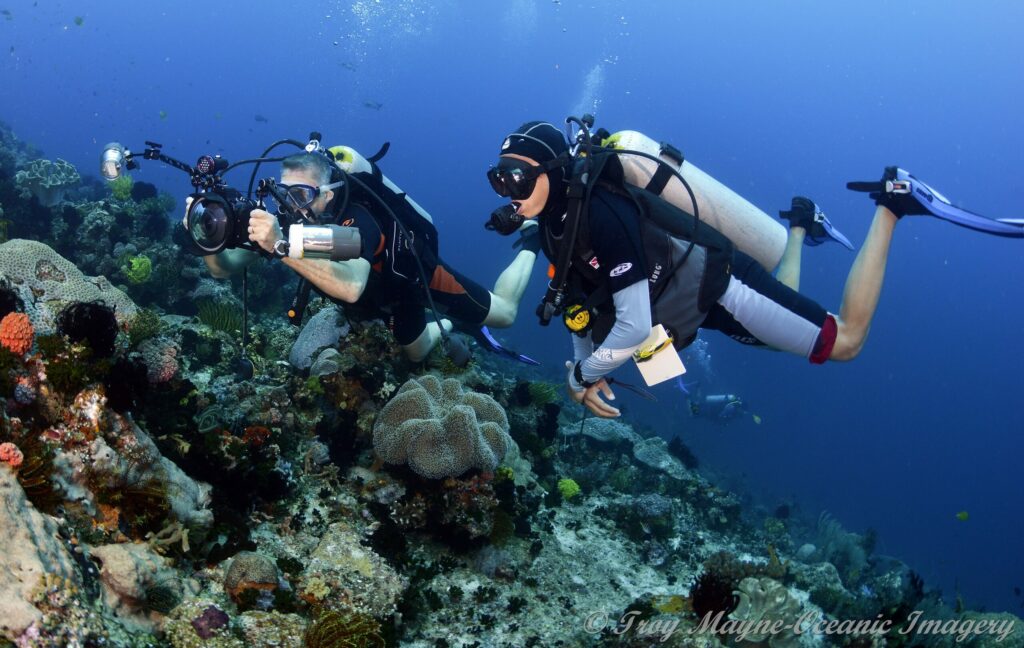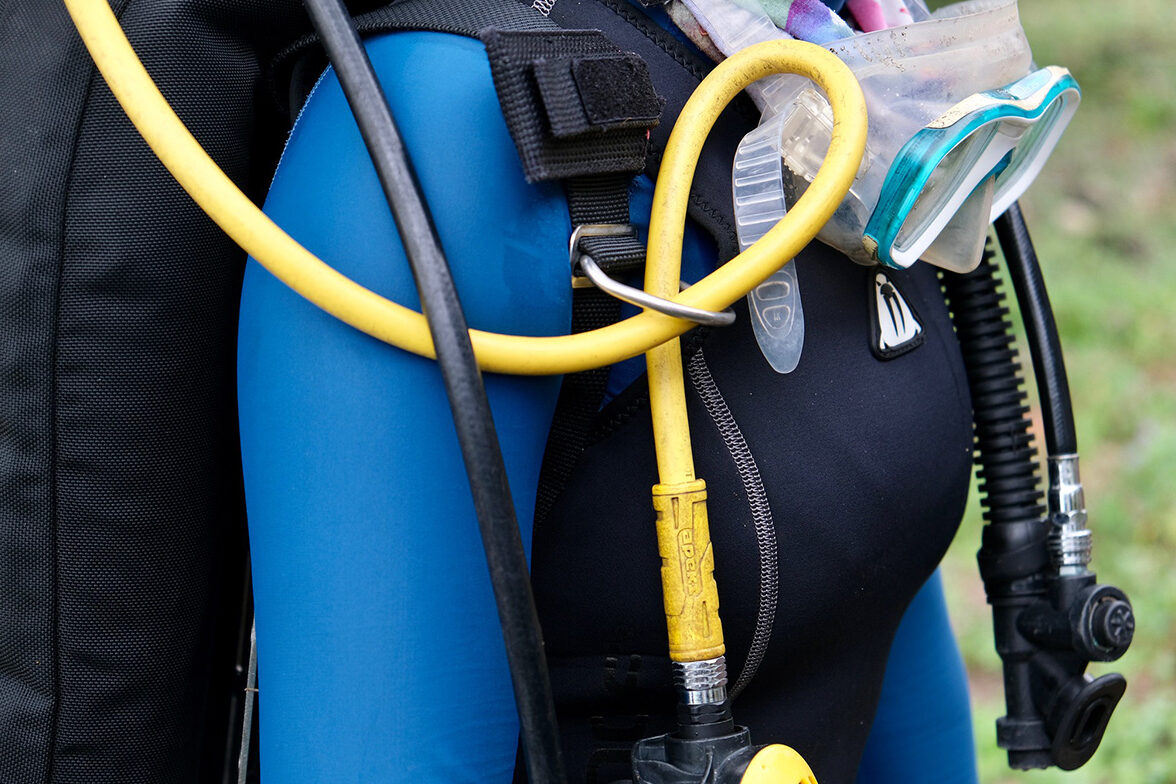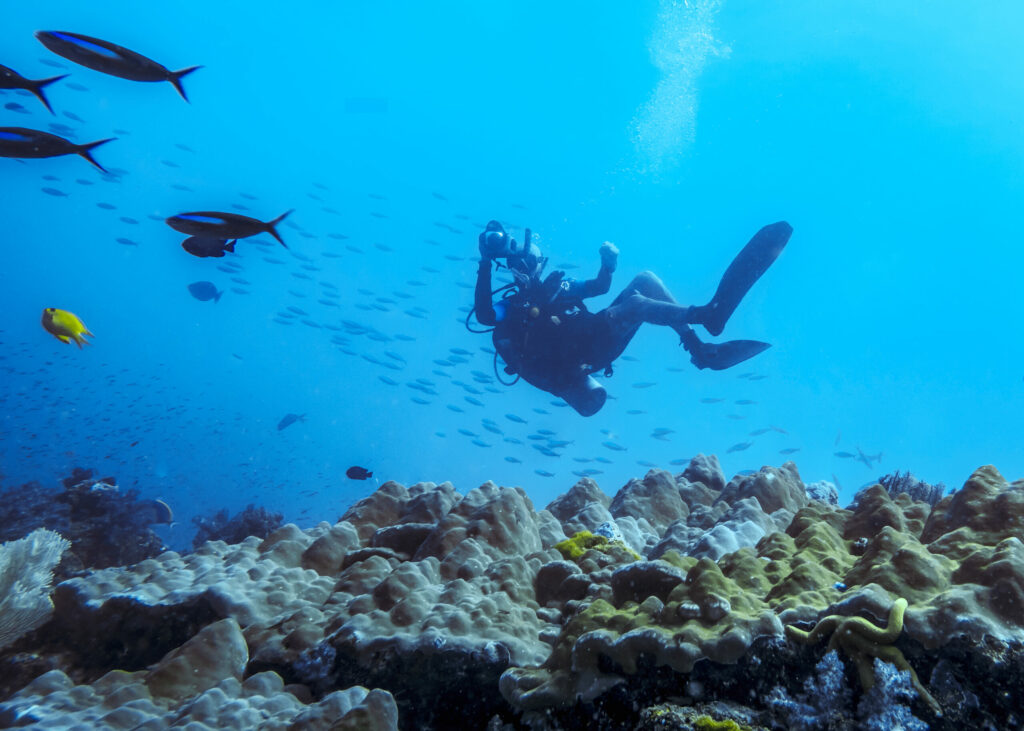As divers, we’re in the front-row seats to some of our planet’s most spectacular sights. Intricate ecosystems, home to the beautiful (and the bizarre) and a world of biodiversity that most people can only dream of seeing with their own eyes. But with this privilege comes great responsibility.
Coral reef tourism draws visitors to over 100 countries and territories all over the world. With such high demand to explore our favourite underwater sites, diving-related damage to sensitive marine ecosystems, like coral reefs, is a growing concern. Worryingly, studies show that 88% of divers make harmful contact with the reef at least once during a dive. However, these damages are usually preventable. They are often caused by anchoring, careless fin-kicking, and the deliberate breaking of coral for souvenirs.
When coral is damaged in this way, it’s far less resilient against other stressors – like climate change – which threatens the survival of reefs all over the world. And who can imagine a world without coral reefs?
Why is it important to guide guests towards best environmental practice?
As dive professionals, you’re on the front line of coral reef protection. This means you have the power to influence divers’ behaviours underwater positively. By educating and managing your guests, you can prevent damage to the reef and help protect coral reefs and other marine life one dive at a time.
Research shows that correcting customers underwater — coupled with pre and post-dive briefings, not only helps them improve their diving ability but also effectively teaches them the best environmental practices, leading to less damage underwater.
Here are the behaviours to look out for so you and your team can correct divers underwater and help them become good environmental role models.

9 tips for making corrections to prevent your guests from causing damage to the reef
1. Help divers achieve neutral buoyancy
Divers with good buoyancy in the water are far less likely to come into contact with the delicate corals and marine environment, which, if damaged, can take a long time to recover. Helping your guests master their buoyancy not only benefits the environment but also helps protect your equipment and makes air consumption more economical too. By removing any extra weight and ensuring that your divers stay in the ‘trim’ position (horizontal with their fins up), you’ll help them gain more control. Doing a weight check on every guest’s first dive can help get them to be correctly weighted from the very beginning. If needed, suggest that they take advanced buoyancy courses for further improvement.

2. Secure all equipment
Many scuba divers are unaware of dangling equipment trawling along the reef, which can cause damage to coral, wildlife and habitats along the way. That’s why it’s important to tuck away all your guests’ dive equipment during buddy checks before they enter the water. And remember to stay vigilant underwater too; keep an eye on your divers and re-secure anything that comes loose during the dive.
3. Avoid stirring up sediment
Stirring up sediment often happens during dives and is usually a result of clumsy fin-kicking or poor buoyancy. But it can (and should!) be avoided. Not only does the disruption of sediment impact visibility, but when benthic sediments are stirred, they can damage corals by subjecting the polyps to increased sedimentation loads. This can be fatal for some species, leading to suffocation and a reduction in growth rates.
To avoid causing damage through sedimentation, make sure you show your guests that they should keep their fins up and away from the seabed by frog kicking horizontally.

4. Don’t step on the coral
Corals are very fragile, so chances are high that coral will die if stepped on. Even the smallest amount of damage can be devastating for some slow-growing species. And although it may seem like a drop in the ocean (pardon the pun!), if you multiply that damage by millions of tourists all over the world every year… well, you get the idea.
To combat this, ensure your guides correct guests when they kick or touch the coral and ask them to remain horizontal on the surface while snorkelling and neutrally buoyant when diving.
5. Don’t touch, chase or feed marine life
When it comes to diving and snorkelling, there are a few golden rules your guests should remember when encountering marine life: don’t touch, don’t chase and don’t feed. Chasing or touching marine life can cause serious stress and damage. Instead, encourage your divers to relax and enjoy the wildlife from a respectful distance. Fish feeding interferes with the balance of the ecosystem, leading to unnatural behaviours. It may be from small actions such as throwing food scraps (i.e. fruit peels) overboard to bigger ones such as shark feeding activities.
6. Follow a no-touch and no gloves policy
By now, it should come as no surprise to read that touching coral can lead to damage and the spread of disease. While some divers prefer to wear gloves to reduce the risk of being stung, cut or bitten during a dive, this can often lead to forgetful or irresponsible behaviour underwater – the temptation to touch is just too great! Also, wearing gloves give divers a false sense of security as they might make them touch venomous marine life that can be life threatening.
However, divers diving without gloves are usually more aware and less likely to touch the reef or other marine life. So, remember to brief your guests about your no-glove and no-touch policy before diving and correct them underwater if you spot any wandering hands!

7. Do not collect marine life — dead or alive
All marine life provides coral reefs with the valuable nutrients and materials they need to survive — yes, even empty shells! When tourists collect things from the ocean as marine souvenirs, it disrupts the ecosystem’s balance and in turn, affects the overall health of the reef. Remind your guests of that all-important motto; take nothing but pictures, and leave nothing but bubbles.
8. Minimise strong lights and flashes used in underwater photography
Underwater photographers often use strobe lighting to capture that perfect shot to add vivid colours and contrast to their photos. However, strong lights and flashes can cause stress to marine life and disrupt natural behaviours which can affect the health of the ecosystem. Where possible, encourage underwater photographers to take their photos using ambient light and use flashes or strobe lighting in moderation (i.e limit to taking 5 photos with flash per diver).
Share tips on the environmental best practice for underwater photographers with your guests.

9. Teach photographers to fin backwards
Research has found that underwater photographers cause more damage to reefs than divers without cameras. This usually happens when they get too close or try to steady themselves for the perfect shot. To tackle this, make sure you brief photographers on best practices beforehand — such as finning backwards to move away from the reef without causing damage and do not manipulate marine animals for the “perfect shot”. During the dive, you can also offer to assist them with their equipment or buoyancy control.
Encourage your guests to be environmental champions
Including environmental points in boat and dive briefings has been proven to help divers improve their behaviour. What’s more, by making corrections underwater and taking the time to explain these corrections in the post-dive debrief, you’ll help your guests gain a deeper understanding so they can make improvements the next time they dive and become fellow environmental role models!


